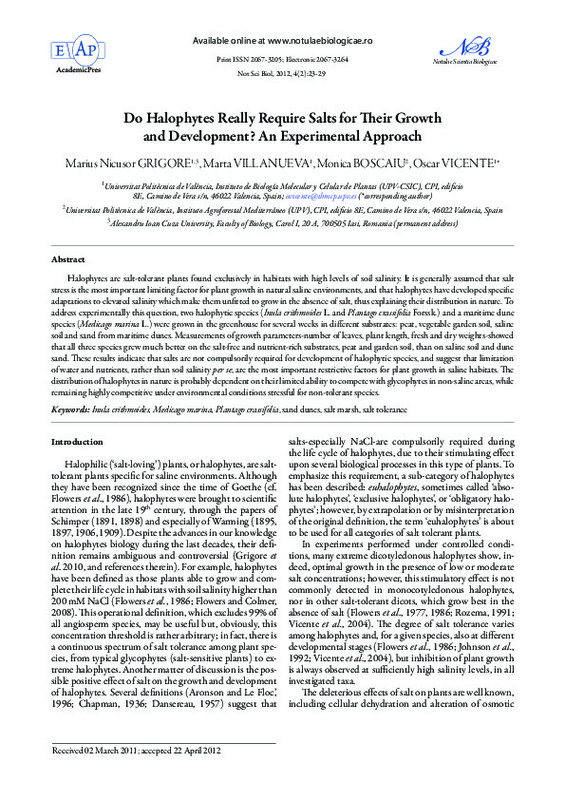JavaScript is disabled for your browser. Some features of this site may not work without it.
Buscar en RiuNet
Listar
Mi cuenta
Estadísticas
Ayuda RiuNet
Admin. UPV
Do Halophytes Really Require Salts for Their Growth and Development? An Experimental Approach
Mostrar el registro completo del ítem
Grigore, MN.; Villanueva Lozano, M.; Boscaiu Neagu, MT.; Vicente Meana, Ó. (2012). Do Halophytes Really Require Salts for Their Growth and Development? An Experimental Approach. Notulae Scientia Biologicae. 4(2):23-29. https://doi.org/10.15835/nsb427606
Por favor, use este identificador para citar o enlazar este ítem: http://hdl.handle.net/10251/78854
Ficheros en el ítem
Metadatos del ítem
| Título: | Do Halophytes Really Require Salts for Their Growth and Development? An Experimental Approach | |
| Autor: | Grigore, Marius N. Villanueva Lozano, Marta | |
| Entidad UPV: |
|
|
| Fecha difusión: |
|
|
| Resumen: |
[EN] Halophytes are salt-tolerant plants found exclusively in habitats with high levels of soil salinity. It is generally assumed that salt stress is the most important limiting factor for plant growth in natural saline ...[+]
|
|
| Palabras clave: |
|
|
| Derechos de uso: | Reconocimiento (by) | |
| Fuente: |
|
|
| DOI: |
|
|
| Editorial: |
|
|
| Versión del editor: | http://dx.doi.org/10.15835/nsb427606 | |
| Código del Proyecto: |
|
|
| Agradecimientos: |
This work was funded by the Spanish Ministry of Science and Innovation (project CGL2008-00438/BOS), with contribution from the European Regional Development
Fund. M.-N.G. acknowledges the support provided by the Romanian ...[+]
|
|
| Tipo: |
|









